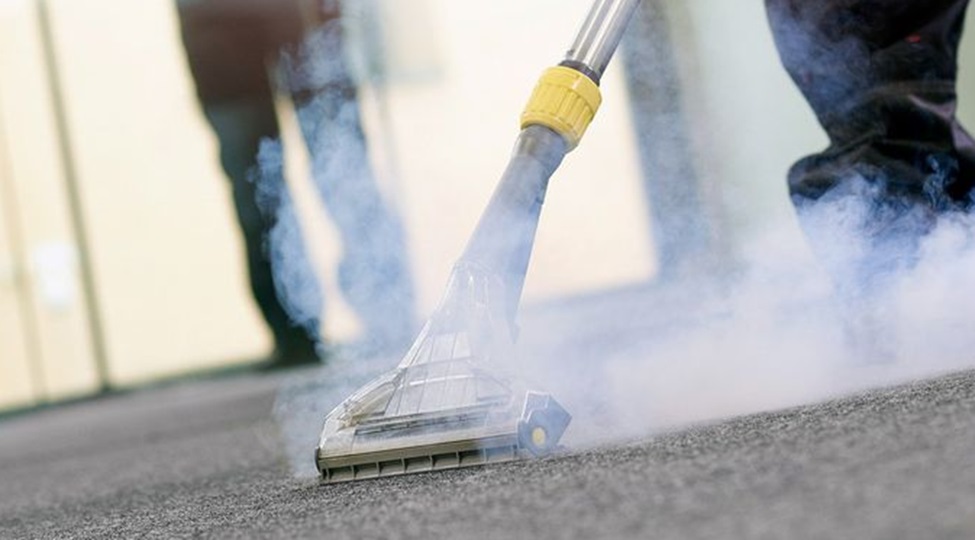
In the realm of household cleaning, there’s a tool that’s gaining significant attention for its efficiency and eco-friendliness: the steam cleaner. Cleaners utilise the power of hot steam to deep clean various surfaces, eliminating dirt, grime, and even germs without the need for harsh chemicals. But how exactly do cleaners work, and what benefits do they offer for your cleaning routine? Let’s delve into the world of steam cleaning to demystify its wonders and explore how it can revolutionise the way you clean your home.
Understanding the Mechanism Behind Steam Cleaners
At its core, a cleaner functions by heating water to a high temperature to produce steam. This steam is then directed through a nozzle or brush attachment onto the surface to be cleaned. The high temperature of the steam effectively loosens dirt, grease, and stains, while the pressure helps dislodge them from the surface. Once the dirt is loosened, it can be easily wiped away, leaving behind a sparkling clean surface.
One of the key advantages of cleaners is their versatility. They can be used on a wide range of surfaces, including tile, hardwood floors, carpets, upholstery, countertops, and even grout. Additionally, cleaners come in various sizes and configurations, from handheld models for quick spot cleaning to larger, more powerful units suitable for tackling entire rooms.
The Benefits of Using a Steam Cleaner
1. Environmental Friendliness
Perhaps one of the most significant advantages of steam cleaning is its environmental friendliness. Unlike traditional cleaning methods that rely on chemical-laden detergents and cleaners, steam cleaning requires nothing more than water. This means you can achieve a thorough cleaning without introducing potentially harmful chemicals into your home environment. For individuals with sensitivities to cleaning chemicals or concerns about environmental impact, steam cleaning offers a safe and sustainable alternative.
2. Deep Cleaning Power
Cleaners are incredibly effective at removing dirt, grime, and stains from surfaces. The high temperature of the steam penetrates deep into pores and crevices, loosening and dislodging even the toughest residues. This makes steam cleaning particularly useful for tackling stubborn messes that may not respond to conventional cleaning methods. Whether you’re dealing with grease buildup in the kitchen or embedded dirt in carpets, a cleaner can provide the deep cleaning power you need to restore surfaces to their pristine condition.
3. Sanitization and Disinfection
In addition to removing visible dirt and grime, cleaners also offer sanitization and disinfection benefits. The high temperature of the steam is capable of killing many common household germs and bacteria, including E. coli, salmonella, and mould spores. This makes steam cleaning an excellent choice for maintaining a hygienic living environment, especially in areas prone to bacterial contamination, such as kitchens and bathrooms. By harnessing the power of steam, you can effectively sanitise surfaces without the need for harsh chemical disinfectants.
4. Allergy Relief
For individuals suffering from allergies or respiratory conditions, steam cleaning can provide welcome relief. Traditional cleaning methods often involve the use of chemical cleaners and airborne particles that can exacerbate allergy symptoms. In contrast, steam cleaning relies solely on water vapour, minimising the release of allergens and irritants into the air. Additionally, the heat of the steam can help neutralise dust mites and other allergens that may be lurking in carpets, upholstery, and bedding, providing a cleaner and healthier living environment for allergy sufferers.
Incorporating Steam Cleaning Into Your Routine
Now that we’ve explored the benefits of steam cleaning, you may be wondering how to incorporate this powerful tool into your cleaning routine. Here are a few tips to help you get started:
1. Choose the Right Steam Cleaner
When selecting a cleaner, consider factors such as size, power, and attachments. For small jobs and quick touch-ups, a handheld cleaner may suffice, while larger areas may require a more robust, upright model. Look for features such as adjustable steam settings and a variety of attachments to ensure versatility and ease of use.
2. Follow the manufacturer’s instructions
It’s essential to read and follow the manufacturer’s instructions for your cleaner carefully. This includes guidelines for filling the water tank, operating the machine safely, and selecting the appropriate steam settings for different surfaces. By following these instructions, you can ensure optimal performance and avoid damaging delicate surfaces.
3. Test in an Inconspicuous Area
Before steam cleaning an entire surface, it’s a good idea to test the cleaner in an inconspicuous area to ensure compatibility and avoid potential damage. This is particularly important for sensitive surfaces, such as hardwood floors or delicate fabrics. Once you’ve confirmed that the cleaner is safe to use, you can proceed with confidence.
4. Regular Maintenance
To keep your cleaner in top condition and prolong its lifespan, be sure to perform regular maintenance tasks such as emptying the water tank after each use, cleaning the steam nozzle or brush attachments, and descaling the machine as needed. Proper maintenance will help ensure consistent performance and prevent the buildup of mineral deposits that can affect steam output.
Conclusion
In conclusion, steam cleaners offer a powerful and eco-friendly solution for deep cleaning a variety of surfaces in your home. From eliminating dirt and grime to sanitising and disinfecting, steam cleaning can revolutionise your cleaning routine while minimising its environmental impact. By understanding how cleaners work and incorporating them into your cleaning regimen, you can enjoy a cleaner, healthier home without the need for harsh chemicals or abrasive cleaners. So why not harness the power of steam and take your cleaning routine to the next level?
